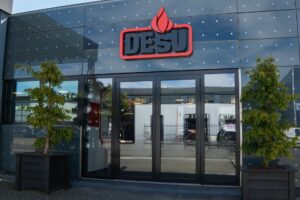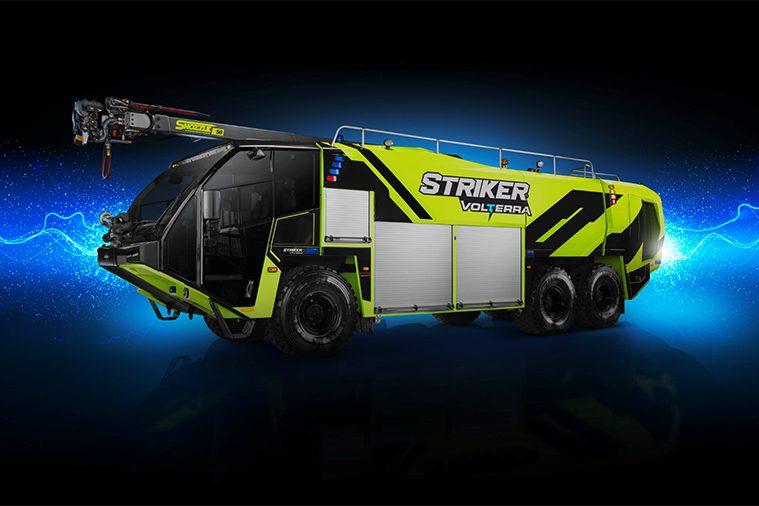One of the world’s largest and most respected independent conservation organisations, with a global network active in over 100 countries, WWF’s mission is to stop the degradation of the earth’s natural environment. It aims to build a future in which humans live in harmony with nature, by conserving the world’s biological diversity and ensuring that the use of renewable natural resources is sustainable.
Instantly recognisable thanks to its famous panda logo, WWF was originally set up in 1961 for the purpose of campaigning to save species endangered by human activity. With Prince Charles as the current president of WWF-UK, the organisation currently supports around 1,300 conservation and environmental projects around the world.
Prior to October last year WWF’s base had been at Panda House in Godalming since 1987. However, as the end of the lease approached, some big decisions had to be made. Following a large donation form the Rufford Foundation, WWF determined to create its own exemplar building where it could work more effectively and spread its message. After carrying out an extensive search a brownfield site, on land that had previously been a car park owned and run by Woking Borough Council, was chosen for the new build.
Completed and opened in November 2013 by WWF Ambassador, Sir David Attenborough, the £20 million Living Planet Centre is at the forefront of sustainable design and construction, incorporating a wide range of renewable energy technologies such as ground source heat pumps and solar photovoltaic (PV) panels. One of the greenest buildings in the UK, it is an impressive timber framed structure that as well as housing WWF’s administrative facilities is also home to the WWF Experience – an exciting interactive exhibition that brings to life the secrets of the natural world and the threats it faces.
Ensuring the safety of the Living Planet Centre’s occupants was a key concern of WWF during the design process. Although the life safety system would obviously need to give the earliest possible warning in the event of a fire, it would also need to be sympathetic to the unique design features and minimise any disruption to the fabric of the building.
With a reputation for excellence as a result of its work on high profile projects across the UK, Cheshire-based Fire Bright Solutions, a BAFE accredited Hochiki Systems Partner, was invited to tender for the project and present its recommendations. Its Sales Director, Haydn Greeves, says: "Formed in 2003, Fire Bright Solutions aims to demonstrate the highest levels of technical competency, professional working practices and ethical conduct, so that our clients can be convinced about our quality of service. To do this we need to be 100% confident in the reliability of the products we install and that’s why we suggested the use of a fire detection system from Hochiki Europe for the WWF."
Specialising in system design, installation, commissioning and maintenance, Fire Bright Solutions has worked with all types of fire detection technology. Greeves considered all the options, and comments: "Given the design of the building, the aesthetic considerations and the spaces that had to be covered, I felt confident that Hochiki Europe’s FIRElink-400 aspirating fire detection solution would tick all the boxes."
The FIRElink-400 aspirating unit consists of an enclosure that houses the electronics that are powered from a supply, and a fan inside it that draws air in via four pipes that are connected to the unit. The air that is drawn in then goes into an aspirating chamber after passing through a filter. The air then passes across a laser light source that is projected into the air itself and if enough smoke particles are detected an alarm condition will be activated. All detectors in the FIRElink range have been approved to EN 54-20:2006 Classes A, B & C by LPCB.
Paul Adams, Hochiki Europe’s Deputy Marketing Manager, explains: "Most types of buildings can benefit from having an aspirating fire detection system but it tends to be particularly useful where an early warning is desirable. The system provides the very highest levels of sensitivity and is able to give warning at the very slightest trace of smoke. This is because aspirating detectors are around ten times more sensitive than general point detectors."
Most of the system at the Living Planet Centre is hidden from view, as the majority of the pipework is located in ceiling voids and the roof fabrication. Greeves states: "This aesthetic advantage is achieved without compromising the effectiveness of the system, which is configured around Hochiki Europe’s Enhanced Systems Protocol (ESP) – a robust addressable communications solution for intelligent fire detection and fully integrated systems."
The system comprises a three loop Advanced MX4403 control panel, which enables a programed phased evacuation alarm strategy to meet the specific client and local fire authorities requirements. This is complemented by a wide range of Hochiki Europe devices including four FIRElink-400 aspiration detection systems, 63 ALG-EN photoelectric smoke sensors, 16 HCP-E(SCI) call points with integral short-circuit isolators, 11 YBO-BSB base sounder beacons, 39 YBO-BS base sounders and nine ACB-E multi-heat sensors. The ACB-E’s incorporate a variable temperature heat element and a rate of rise heat element, allowing either thermal element or both elements simultaneously to be active in making the fire decision.
Part of the original car park has also been incorporated into the new building and Hochiki Europe technology has been installed here too in the form of 55 IP67 rated ACB-EW waterproof multi-heat sensors.
The Living Planet Centre has proved immensely popular with WWF staff and visitors alike and it its being held as an exemplar of modern construction practice. The last word goes to WWF spokesman Richard Eaton, who concludes: "It is essential that a state-of-the-art building like this has an equally innovative life safety infrastructure. I’m delighted with the sound advice and skilled craftsmanship that Fire Bright Solutions provided us with in the installation of a fire detection system from Hochiki Europe."
For almost 100 years Hochiki has led the way in the design and manufacture of innovative life safety solutions. Its leading edge commercial and industrial fire detection and emergency lighting products have acquired global acceptance as the benchmark for high-integrity and long-term reliability.
With a global sales turnover exceeding £400 million, Hochiki Europe is a wholly independent, multinational, publicly listed company with over 1,500 employees working across five manufacturing plants, 32 sales offices and 18 subsidiaries.
Its ongoing commitment to manufacturing innovation ensures customer satisfaction and its production facilities in Japan, the USA and Europe offer international continuity in quality, service and supply.
www.hochikieurope.com / www.firebrightsolutions.co.uk




































